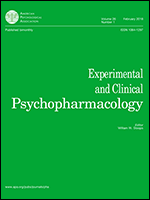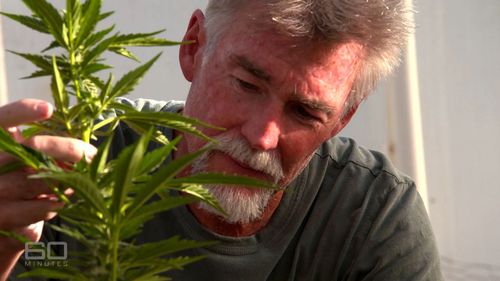 “Cannabinoids can enhance the antinociceptive effects of opioids in a synergistic manner, potentially reducing the analgesic dosage of opioids and improving pain therapy. This strategy has also been used as a rationale to combine certain antidepressants and opioids.
“Cannabinoids can enhance the antinociceptive effects of opioids in a synergistic manner, potentially reducing the analgesic dosage of opioids and improving pain therapy. This strategy has also been used as a rationale to combine certain antidepressants and opioids.
In this experiment, opioid-induced thermal antinociception was assessed in rhesus macaques using a warm-water tail-withdrawal procedure with 3 water temperatures (40, 50, and 55 °C). In general, the acute antinociceptive effects of intramuscular (i.m.) cumulative doses of heroin were studied alone or in combination with i.m. (-)-trans-delta-9-tetrahydrocannabinol (THC), cannabinol (CBN), or the tricyclic antidepressant amitriptyline.
A nonantinociceptive dose of THC (1 mg/kg) shifted the ED50 for the heroin dose-effect curve 3.6-fold leftward at 50 °C and 1.9-fold leftward at 55 °C compared with heroin alone. When the cannabinoid type-1 receptor (CB1R) antagonist, rimonabant, was administered prior to the most effective THC-heroin combination, rimonabant blocked the THC enhancement of heroin antinociception. When CBN (1-3.2 mg/kg) was administered prior to heroin, or 1 mg/kg of CBN was administered prior to a combination of 0.32 mg/kg of THC and heroin, no shifts were evident in the heroin dose-effect curves at either temperature.
However, similar to THC, amitriptyline (0.32-1 mg/kg) administered prior to heroin significantly shifted the heroin dose-effect curve leftward. Heroin produced both dose- and temperature-dependent thermal antinociception in nonhuman primates and THC produced opioid-enhancing effects in a CB1R-dependent manner. These effects of THC were not shared by cannabinol, but were quantitatively similar to that of amitriptyline.”

 “The biological effects of endocannabinoid system are mediated by two types of receptors,
“The biological effects of endocannabinoid system are mediated by two types of receptors,  “Nociceptive Transient Receptor Potential channels such as TRPV1 are targets for treating pain. Both antagonism and agonism of TRP channels can promote analgesia, through inactivation and chronic desensitization.
“Nociceptive Transient Receptor Potential channels such as TRPV1 are targets for treating pain. Both antagonism and agonism of TRP channels can promote analgesia, through inactivation and chronic desensitization. “The prior medical literature offers little guidance as to how pain relief and side effect manifestation may vary across commonly used and commercially available cannabis product types. We used the largest dataset in the United States of real-time responses to and side effect reporting from patient-directed cannabis consumption sessions for the treatment of pain under naturalistic conditions in order to identify how cannabis affects momentary pain intensity levels and which product characteristics are the best predictors of therapeutic pain relief.
“The prior medical literature offers little guidance as to how pain relief and side effect manifestation may vary across commonly used and commercially available cannabis product types. We used the largest dataset in the United States of real-time responses to and side effect reporting from patient-directed cannabis consumption sessions for the treatment of pain under naturalistic conditions in order to identify how cannabis affects momentary pain intensity levels and which product characteristics are the best predictors of therapeutic pain relief. “Cannabis was extensively utilized for its medicinal properties till the 19th century. A steep decline in its medicinal usage was observed later due to its emergence as an illegal recreational drug.
“Cannabis was extensively utilized for its medicinal properties till the 19th century. A steep decline in its medicinal usage was observed later due to its emergence as an illegal recreational drug.


 “Olivia Newton-John says medicinal marijuana is a key part of her treatment for stage four cancer. In an exclusive interview with 60 Minutes reporter Liz Hayes, Newton-John says that not only has cannabis assisted with her pain management, sleep and anxiety – but it’s having affects on her physical health too. “I’m incredibly pro cannabis,” she told Liz Hayes. “If I don’t take the cannabis, I can feel the pain so I know it’s working.”
“Olivia Newton-John says medicinal marijuana is a key part of her treatment for stage four cancer. In an exclusive interview with 60 Minutes reporter Liz Hayes, Newton-John says that not only has cannabis assisted with her pain management, sleep and anxiety – but it’s having affects on her physical health too. “I’m incredibly pro cannabis,” she told Liz Hayes. “If I don’t take the cannabis, I can feel the pain so I know it’s working.”
 “Cannabichromene (CBC) is one of the most abundant phytocannabinoids in Cannabis spp. It has modest anti-nociceptive and anti-inflammatory effects and potentiates some effects of Δ9 – tetrahydrocannabinol (THC) in vivo. How CBC exerts these effects is poorly defined and there is little information about its efficacy at cannabinoid receptors. We sought to determine the functional activity of CBC at CB1 and CB2 receptors.
“Cannabichromene (CBC) is one of the most abundant phytocannabinoids in Cannabis spp. It has modest anti-nociceptive and anti-inflammatory effects and potentiates some effects of Δ9 – tetrahydrocannabinol (THC) in vivo. How CBC exerts these effects is poorly defined and there is little information about its efficacy at cannabinoid receptors. We sought to determine the functional activity of CBC at CB1 and CB2 receptors.